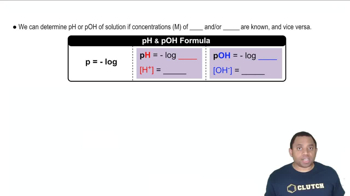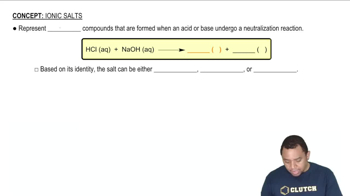Here are the essential concepts you must grasp in order to answer the question correctly.
pH and pOH
pH is a measure of the acidity or basicity of a solution, defined as the negative logarithm of the hydrogen ion concentration. A pH of 7 is neutral, below 7 is acidic, and above 7 is basic. The pOH is related to pH through the equation pH + pOH = 14, which helps in understanding the balance of hydroxide and hydrogen ions in the solution.
Recommended video:
Salt Hydrolysis
Salt hydrolysis occurs when an ionic compound dissolves in water and reacts with water to produce either acidic or basic solutions. The nature of the ions from the salt determines whether the solution will be acidic, neutral, or basic. For example, NaF produces fluoride ions that can react with water to form hydroxide ions, leading to a basic solution.
Recommended video:
Identifying Ions in Salts
Identifying the ions present in a salt is crucial for determining its properties in solution. In this case, NaF, NaCl, and NaOCl dissociate into different ions: NaF yields Na+ and F-, NaCl yields Na+ and Cl-, and NaOCl yields Na+ and OCl-. The behavior of these ions in water, particularly their ability to affect pH, helps in identifying the unknown salt based on the measured pH.
Recommended video:
 Verified step by step guidance
Verified step by step guidance


